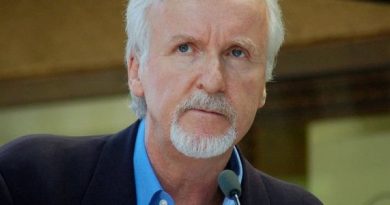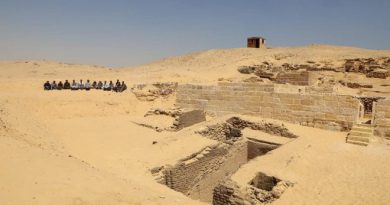Mysterious void discovered inside Great Pyramid
The mysteries of the pyramids have deepened with the discovery of what appears to be a giant void within the Khufu, or Cheops, monument in Egypt. It is not known why the cavity exists or indeed if it holds anything of value because it is not obviously accessible.
Japanese and French scientists made the announcement after two years of study at the famous pyramid complex. They have been using a technique called muography, which can sense density changes inside large rock structures. The Great Pyramid, or Khufu’s Pyramid, is thought to have been constructed during the reign of Pharaoh Khufu between 2509 and 2483 BC.
At 140m (460 feet) in height, it is the largest of the Egyptian pyramids located at Giza on the outskirts of Cairo. The tantalizing find was revealed following a two-year study involving the use of muography – a scanning technique capable of sensing density changes in rock structures – to look for evidence of secret rooms inside the Great Pyramid of Giza in Egypt.
The empty space that the researchers have discovered appears to be around 30 meters long and is situated above the Grand Gallery – the most striking of all the pyramid’s internal passageways. “We don’t know whether this big void is horizontal or inclined; we don’t know if this void is made by one structure or several successive structures,” said Mehdi Tayoubi from the Paris HIP Institute.
“What we are sure about is that this big void is there; that it is impressive; and that it was not expected as far as I know by any sort of theory.” Exactly what could lie within this mysterious space remains, for the moment at least, unclear. “It could be a kind of space that the builders left to protect the very narrow roof of the grand gallery from the weight of the pyramid,” said archaeologist Mark Lehner.
There is also a chance however that it could be a whole new chamber filled with ancient treasures. “What we are doing is trying to understand the internal structure of the pyramids and how this pyramid has been built,” said Cairo University’s Hany Helal.
The ScanPyramids team is being very careful not to describe the cavity as a “chamber”. Khufu contains compartments that experts believe may have been incorporated by the builders to avoid collapse by relieving some of the stress of the overlying weight of stone. The higher King’s Chamber, for example, has five such spaces above it.
The renowned American archaeologist Mark Lehner sits on a panel reviewing ScanPyramids’ work. He says the muon science is sound but he is not yet convinced the discovery has significance. “It could be a kind of space that the builders left to protect the very narrow roof of the Grand Gallery from the weight of the pyramid,” he told the BBC’s Science In Action programme.
“Right now it’s just a big difference; it’s an anomaly. But we need more of a focus on it especially in a day and age when we can no longer go blasting our way through the pyramid with gunpowder as [British] Egyptologist Howard Vyse did in the early 1800s.”
One of the team leaders, Hany Helal from Cairo University, believes the void is too big to have a pressure-relieving purpose, but concedes the experts will debate this. “What we are doing is trying to understand the internal structure of the pyramids and how this pyramid has been built,” he told reporters.
“Famous Egyptologists, archaeologists and architects – they have some hypotheses. And what we are doing is giving them data. It is they who have to tell us whether this is expected or not.” Much of the uncertainty comes down to the rather imprecise data gained from muography.
This non-invasive technique has been developed over the past 50 years to probe the interiors of phenomena as diverse as volcanoes and glaciers. It has even been used to investigate the failed nuclear reactors at Fukushima.

Muography makes use of the shower of high-energy particles that rain down on the Earth’s surface from space. When super-fast cosmic rays collide with air molecules, they produce a range of “daughter” particles, including muons.
Source: BBC News



